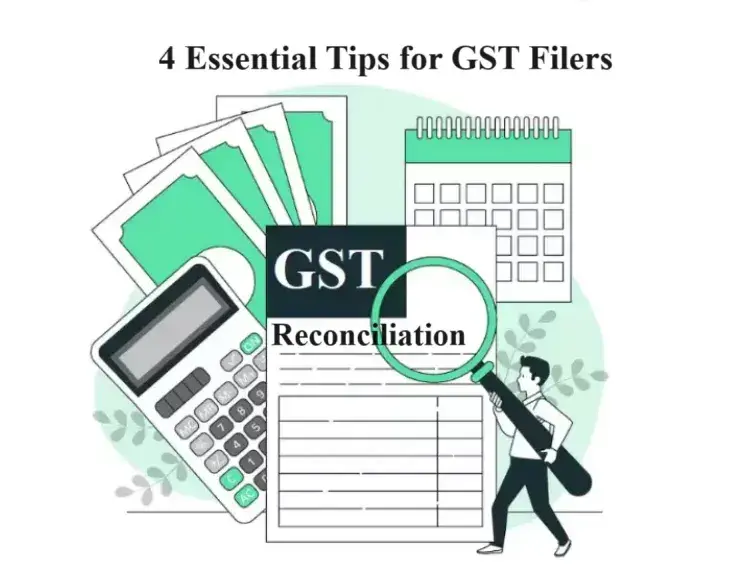Mastering GST Reconciliation: 4 Essential Tips for GST Filers

Maintain Accurate Records-
Accurate record-keeping forms the foundation of successful GST reconciliation. Businesses should maintain a comprehensive and organised set of records, including sales and purchase invoices, tax payment receipts, and credit/debit notes.
Utilising accounting software or Enterprise Resource Planning (ERP) like Ginesys, Microsoft Dynamics 365 or other such systems can significantly simplify the process by automating data entry and reducing the chances of manual errors.
Regularly reconcile your books of accounts with the data available on the GST portal to identify any discrepancies promptly, by comparing GSTR 1 Vs 3B GSTR 2B Vs GSTR3B.
Reconcile on a Regular Basis-
Regular reconciliation is key to identifying and addressing discrepancies in a timely manner. Instead of waiting until the end of the financial year, reconcile your GST data on a monthly or quarterly basis. This helps in early detection of errors, reducing the risk of penalties and fines.
During reconciliation, compare the figures in your financial records with the data available on the GST portal. Focus on key elements such as taxable turnover, input tax credit, and tax liability. Checking missing invoices, mismatched invoices & sending email communications to vendors regarding the erroneous invoices, will be very helpful.
Utilise Reconciliation Tools-
Take advantage of technology-driven reconciliation tools to streamline and automate the process. Many accounting software solutions offer built-in reconciliation features that can match your financial data with the information on the GST portal. These tools can highlight discrepancies, making it easier for filers to identify and rectify errors promptly.
Additionally, the GSTN (Goods and Services Tax Network) provides reconciliation tools on the GST portal. Familiarise yourself with these tools and leverage them to simplify the reconciliation process. Automation not only reduces the likelihood of errors but also saves time, allowing businesses to focus on core activities.
Stay Informed About Rule Changes-
GST laws and rules are subject to periodic amendments. It is essential for businesses to stay informed about any changes in the GST framework that may impact reconciliation processes.
Regularly check official notifications and updates from the GSTN to ensure that your reconciliation practices align with the current regulations.
Conclusion-
GST reconciliation is a continuous process that requires attention to detail, regular monitoring, and adaptation to changes in the process. By maintaining accurate records, reconciling on a regular basis, utilising reconciliation tools such as EaseMyGST integrated with Ginesys ERP, which can help you to reconcile your purchase data with a few clicks with vendors' uploaded invoices and staying informed about rule changes, GST filers can enhance their compliance efforts and contribute to a seamless and error-free reconciliation process.





